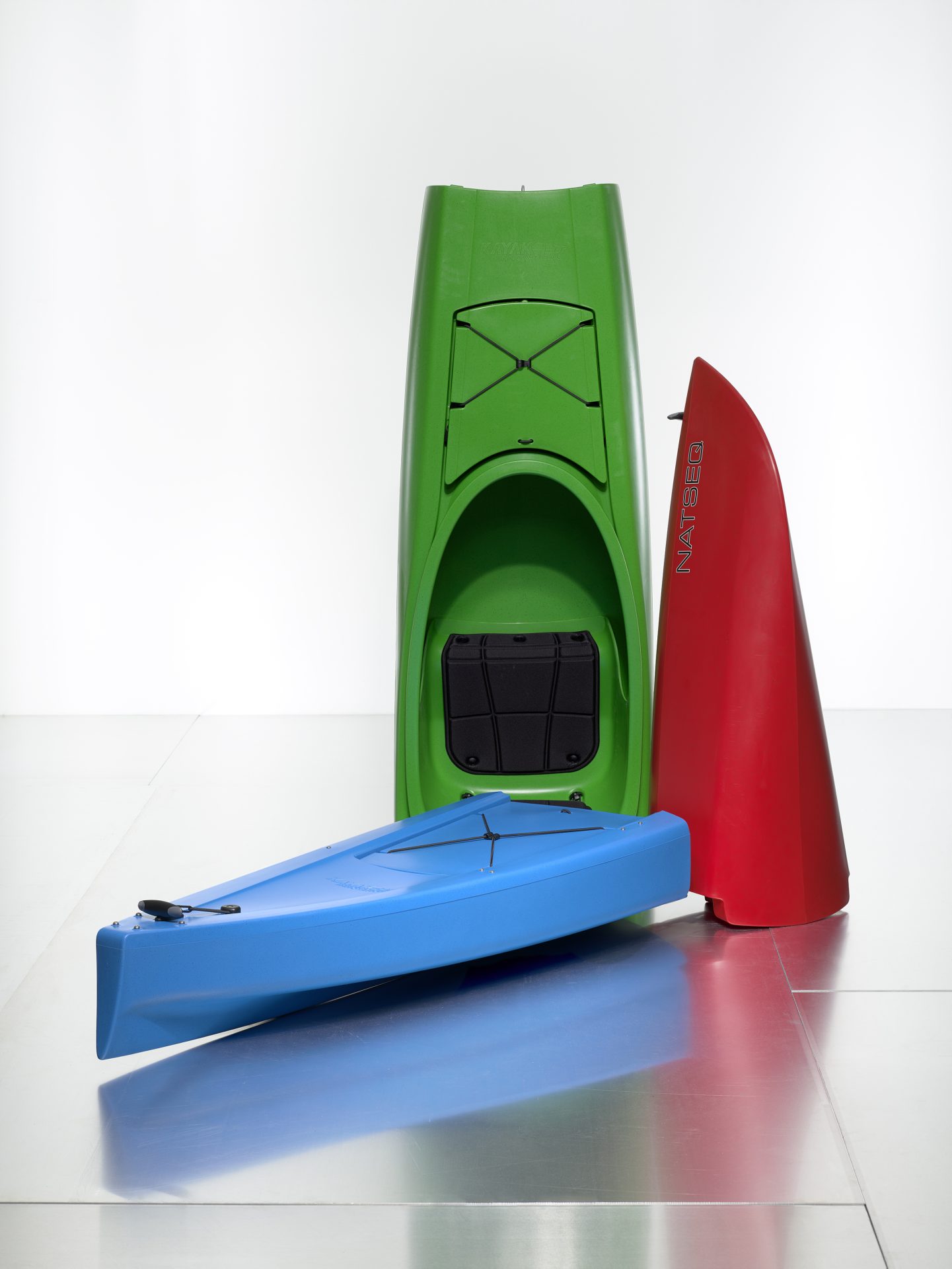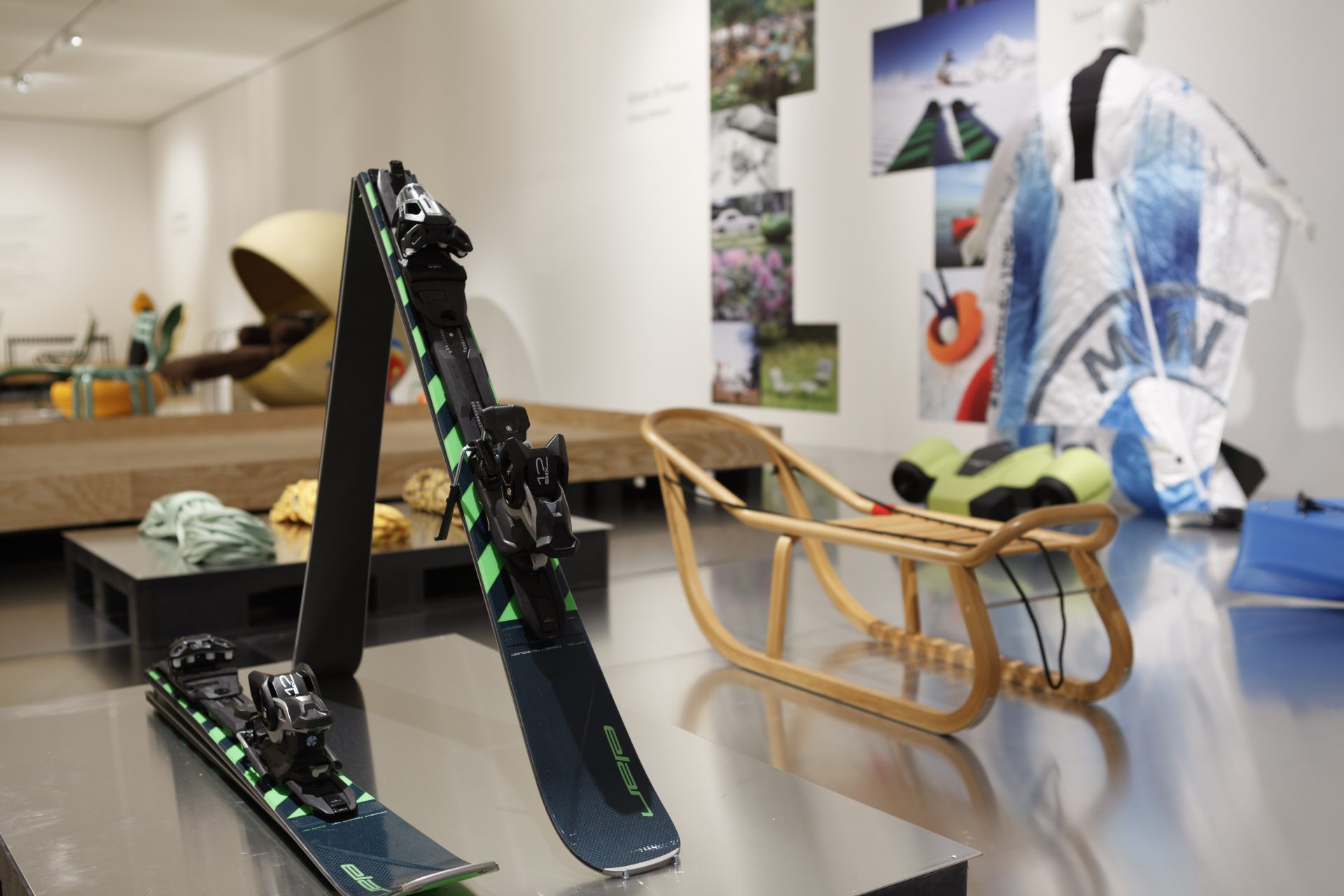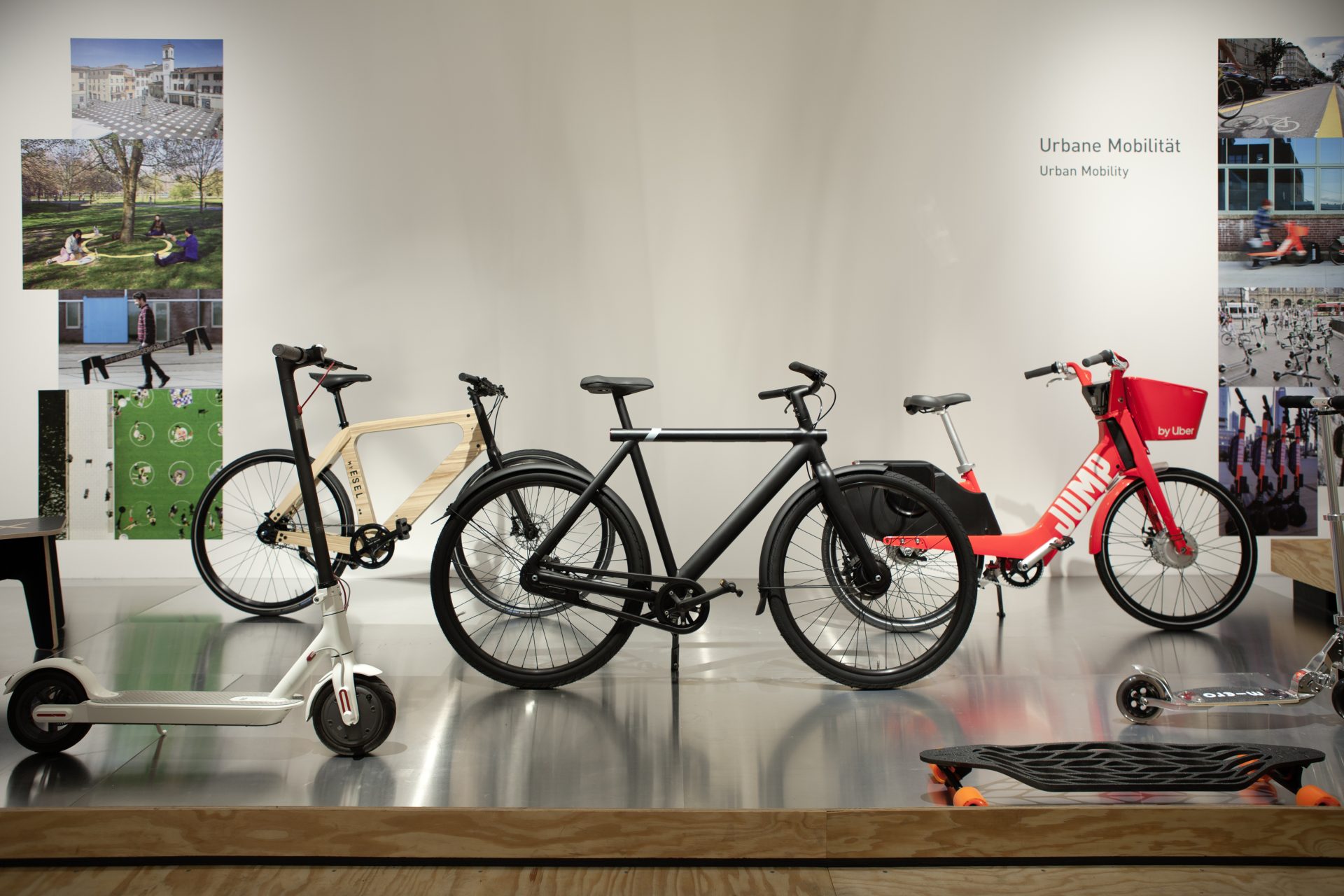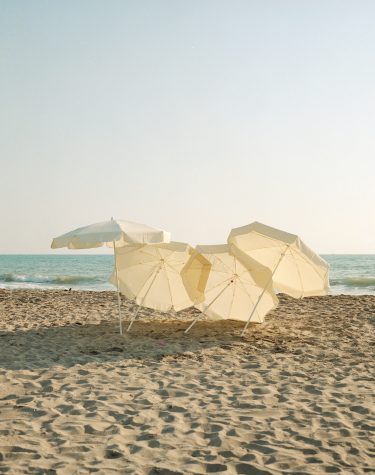Heading Outdoors
About the Exhibition
The exhibition “Heading Outdoors” focuses on one of humankind’s fundamental longings – the desire to go outside. Irrespective of whether this means heading out into the great wide open, going out to a park, into our own backyards, or even to the city, alone or with other people – our need to spend some of our free time outside is greater than ever.
In design, this centuries-old longing is reflected in all manner of ways, be it in designs for outdoors, in sports equipment or in folding, hinged and portable objects. Even nature itself serves as a source of inspiration for design objects. The exhibits range from camping equipment from what was once East Germany to 3D printed garden chairs made of recycled plastic or even the kind of park benches that support social distancing. The exhibition is structured into a total of seven thematic complexes that also cover the different fields of the museum’s collection: “Outdoors = Indoors”, “Sitting Outdoors”, “Camping in East Germany”, “Urban Mobility”, “Parks and the Pandemic”, “Sports Outdoors” and “Foehn Skies”.
A footbridge made, as is the entire exhibition architecture, of recycled and reusable material, guides viewers through the room, allowing for perspectives on the different subjects and eras.
As the exhibits make it clear, design is always specific to particular societies and times. One example is the material that is plastic. In the 1960s, it was hailed as trendsetting but nowadays it poses an environmental problem that is almost impossible to solve. Issues relating to sustainability currently present designers with major challenges.
The exhibition invites viewers to consider the relationships between humans and nature, between public and private space, inside and outside, and even our responsibility towards “Heading Outdoors”, since all these relationships are always subject to change.
The exhibition design was developed in cooperation with the designer Hannes Gumpp.
The show is accompanied by an exhibits booklet in a German, English, and easy-to-read version.



Audio exhibition tour by themes
Outdoors = Indoors
Nature has repeatedly served design as a source of inspiration. For example, in the late 1960s and early 1970s designers collaborated with the Italian firm Gufram to bring the outdoors indoors – albeit in an ironic, provocative manner informed by Pop Art. They masterminded sculptural objects made of plastic that stand for a humorous, playful approach to design, enthusiasm for new materials and a society undergoing transformation.
Play the audio version
Sitting Outdoors
Our notion of the garden is closely connected with the history of sitting and seating. While around 1900 people used weatherproof chairs made of iron and wood, from the 1960s onwards these were increasingly replaced by seating made of plastic. This new versatile material made it possible to have bright colors, round or organic shapes, and affordable furniture. Spherical designs embodied an enthusiasm for space travel and visions of the future, the so-called ‘Space Age’. Today, the focus of furniture design is shifting towards questions of sustainability and flexible use both indoors and outdoors.
Play the audio version
Camping in East Germany
Camping symbolizes a longing for nature, holiday, freedom and individuality. As citizens in former East Germany were only allowed to travel to a few countries their enthusiasm for camping saw a continual rise. This passion was expressed in objects that could be folded and stacked while also being lightweight and sturdy – criteria that are still the major focus when designing camping paraphernalia today.
Play the audio version
Urban Mobility
The manner in which we move around our towns and cities is constantly changing. Electromobility and the principle of (car) sharing are among the most important new developments in recent years. The range of exhibits presented here extends from skateboards via scooters and e-scooters through to touring bikes and rental e-bikes. However, some of the innovations in this area nonetheless have a negative impact on the environment: High resource consumption levels and the problem of large-scale disposal call into question the sustainability of some of these solutions.
Play the audio version
Sports outdoors
As a focus of the museum’s collection activities, sport encompasses summer and winter sports such as watersports and mountain sports. Climbing, kayaking, tobogganing, and skiing primarily occur in the mountains. Innovations in these areas include space-saving products like folding skis or modular kayaks. Moreover, sustainability also plays an important role in the guise of product longevity and local production sites. However, such a huge number of people heading outdoors also puts great pressure on nature and the environment.
Play the audio version
Parks and the Pandemics
Especially during the COVID-19 pandemic, parks and green spaces provide places for people to escape, places which are open to the public and assume great importance in people’s everyday lives. The municipal park has a social function offering recreation, leisure, and encounters. The section on ‘Parks and the Pandemic’ reflects innovative and experimental solutions for the new requirements for social distancing and waste disposal in public spaces.
Play the audio version
Foehn Skies
Colors play an elementary role in design, a belief shared by designers Otl Aicher and Eberhard Stauß. In the early 1980s when they teamed up to design the corporate identity for Munich Airport, they chose a color concept that was inspired by the landscape in Upper Bavaria. As one of the main colors they chose a bright “light airport blue”. In their eyes it was characteristic for the play of light and color in the foothills of the Alps and the “Foehn skies of Upper Bavaria” produced by the foehn winds there.
Play the audio version
Short video on the exhibition
Ayzit Bostan. Parasol
-
Curated by:
Polina Gedova, Christopher Haaf
-
Cooperation partners:
Dok.fest München, Goetheinstitut, Kunstareal München, Hochschule für Musik und Theater München, Münchner Volkshochschule
